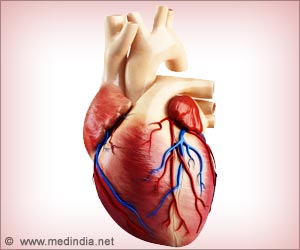Understanding of the formation of the heart chambers will enable us to better comprehend the biology behind detrimental heart defects and how best to address them.

‘A population of progenitor cells expressing protein-coding gene Foxa2 during early development gives rise to cardiovascular cells of both the left and right ventricular chambers, but not the atria.’





An in-depth understanding of the formation of the heart chambers
will enable us to better comprehend the biology behind detrimental heart
defects and how best to address them.A population of cells in early development may give rise to the ventricular chambers of the heart, but not the atria, revealed a study led by researchers from the Mindich Child Health and Development Institute at the Icahn School of Medicine at Mount Sinai and published today in Nature Communications.
Using a model that traces cell lineage in mice, investigators studied the protein-coding gene Foxa2, primarily associated with endoderm and ectoderm development during embryogenesis. They discovered a population of progenitor cells expressing Foxa2 during early development that gave rise to cardiovascular cells of both the left and right ventricular chambers, but not the atria. Their research showed that atrial-ventricular segregation may occur long before the morphological establishment of differentiated cardiac structures.
Lead investigator Nicole Dubois, Assistant Professor in the Department of Cell, Developmental and Regenerative Biology at the Icahn School of Medicine at Mount Sinai, said, "In addition to informing our understanding of early heart development, we hope that these findings will also lead to new protocols for the generation of ventricular cardiomyocytes in cell culture that could potentially be used in therapeutic settings."
"There is a lot we still don't understand about this population, or the function of Foxa2 during the formation of the heart, but we think these findings provide a powerful new system to answer some of the most relevant open questions about how early heart development occurs," said Evan Bardot, PhD student and first author of the Nature Communications study.
Advertisement









